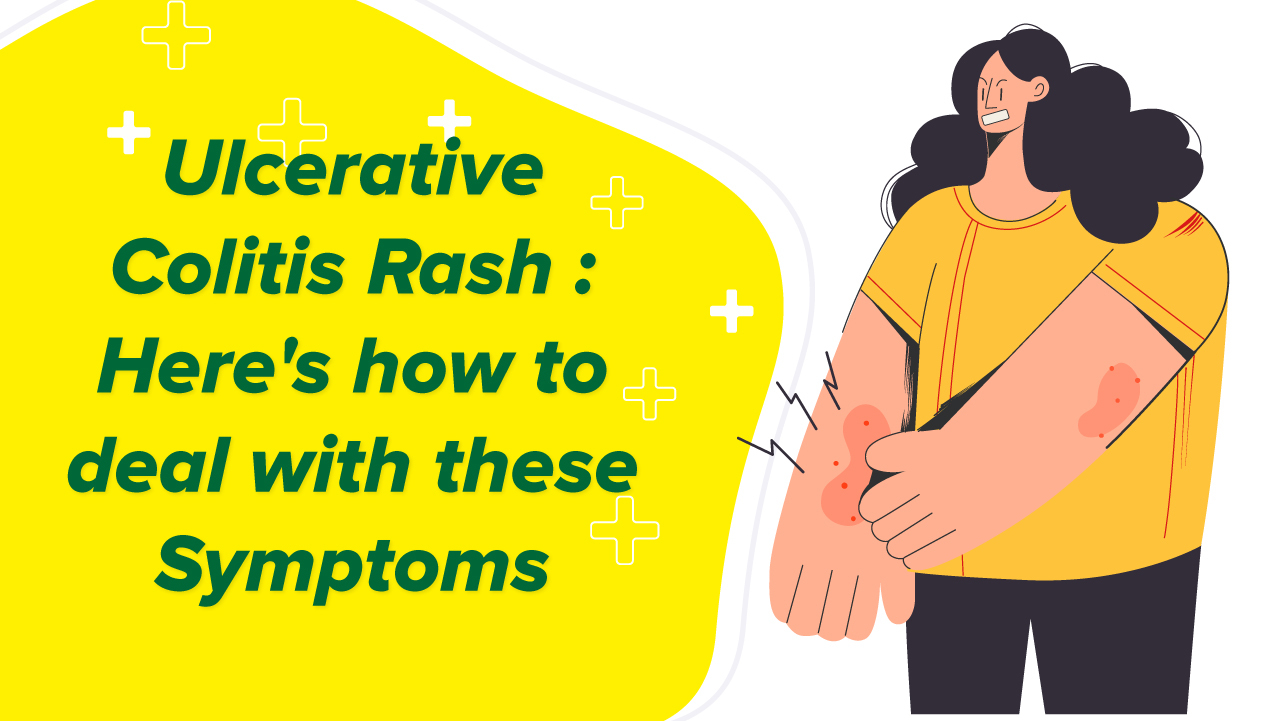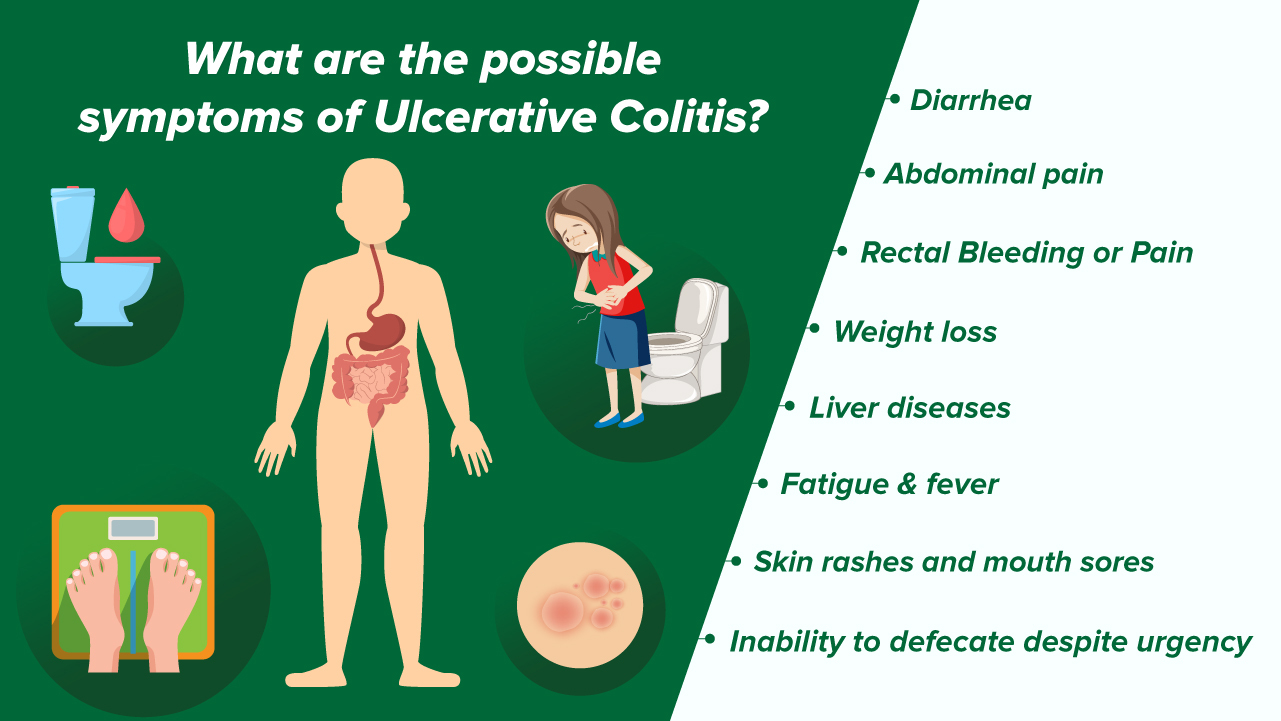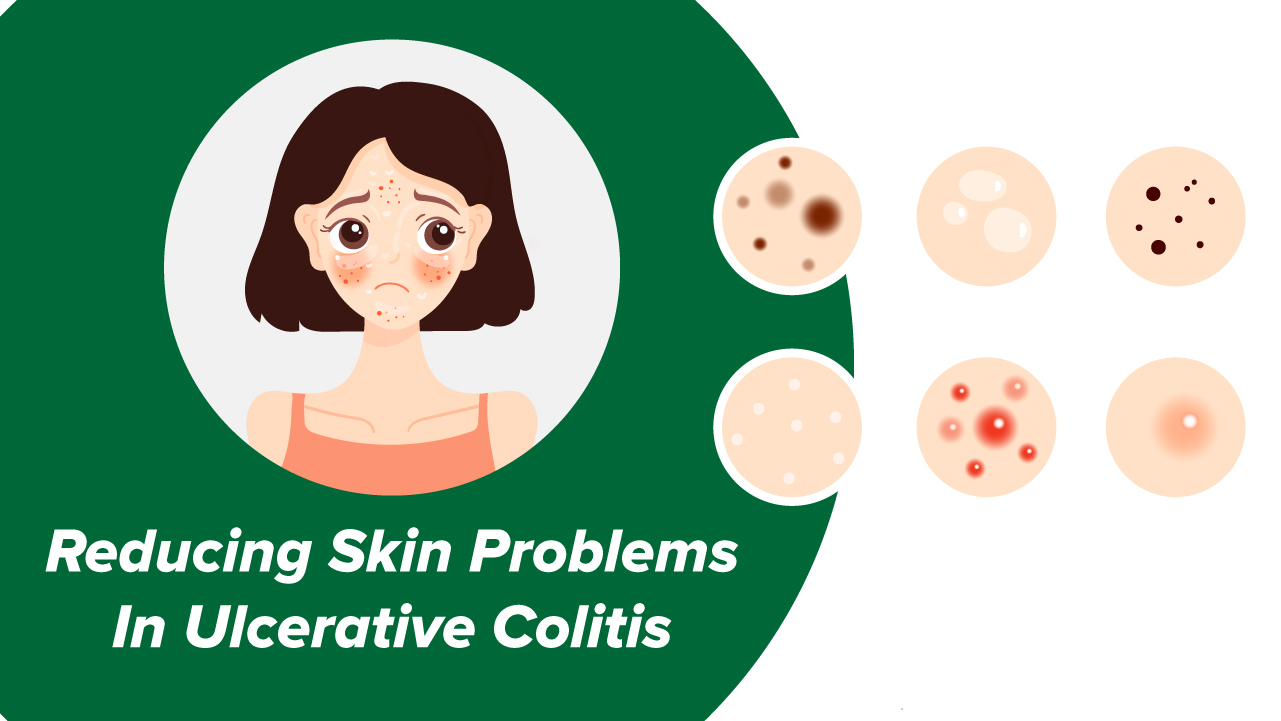
Ulcerative Colitis is an inflammatory bowel disease, which causes irritation, inflammation, and ulcers in the intestine lining. With no permanent cure, people suffer from symptoms on and off throughout their life.
The body inflammation that causes ulcerative colitis does also affect the skin, leading to painful swollen skin rashes. Sometimes, the medication that a person might be undergoing to control UC can also take a toll on their skin. It is the most common skin issue with people who have UC. It causes tender red nodules on arms or legs, which might look like bruises. Around 3 to 10% of the UC patients have been said to be suffering from Erythema Nodosum. It is said to be seen more in women than men, which generally tends to coincide with flare-ups. However, when UC gets under control, it is likely to go away. Pyoderma Gangrenosumis is caused by immune system disorder which is also due to UC. This skin rash begins as a cluster of blisters on shins, ankles, and arms, and can form deep ulcers when it spreads. It is said to be the second most common skin disease caused in UC, which can be quite painful and cause scarring and can easily get infected if not cleaned properly. There have been many recorded cases where the UC and other IBD patients were also affected by psoriasis. Caused due to issues in the immune system, Psoriasis leads to red, patchy skin which is covered with dead skin cells. There have been studies that found out the genetic links between the genes that cause IBD and those that cause psoriasis. Red raised spots appear anywhere on the body, which is said to be a result due to reaction in the immune system. The actual cause of hives is impossible to be identified but is generally a result of an allergic reaction, gut disease, chemical or insect stings. Hives are often itchy skin rashes that can appear on any part of the body. UC is linked to cases of chronic hives. It is a condition where small bumps appear on the upper chest and arms, along with other symptoms. In some cases, lesions can be caused on the legs also. Even though the root cause of BADAS is not yet fully identified, it is said to be caused by the inflammation caused by the bacteria in the gut. These are two skin conditions that are linked, where the former causes red pustules in the armpit or groin, while the latter in the mouth. The pustules usually appear after UC has been active for several years. PPV is so closely linked to UC that some people are only diagnosed with UC after one or both forms of PPV develop. It is one of the rare skin conditions linked with UC, which is much more common in women than men. It appears as small red or purple bumps on the upper limbs, face, or neck and develops into painful lesions. Though older adults and even infants can develop Sweet’s syndrome, the condition mainly affects people between the ages of 30 and 60. It is often linked with active flare-ups, which might disappear on its own, but recurrence is much more common which results in scars. It destroys the pigment-producing cells and may lead to white patches forming anywhere on the body. Vitiligo is considered an immune disorder. It is estimated by the researchers that 20% of vitiligo patients might be suffering from UC as well. It occurs when small blood vessels under the skin become inflamed and die, and this reaction leads to the development of purple spots on the legs and ankles. It is known as hypersensitivity vasculitis. In most cases, the skin lesions go away once the UC is treated.
The inflammation in the body that causes UC can also affect the skin. This can lead to swollen and painful skin rashes. The above-mentioned skin diseases are a few of the most commonly associated with UC. According to a study conducted in 2015, at least 15% of IBD patients are affected by some kind of skin problem. If diet and lifestyle changes are not made, there is nothing much that can be done to prevent skin-related conditions caused due to ulcerative colitis. But it can be helpful to manage the underlying ulcerative colitis, as many of these skin problems coincide with flares. Inflammation is a self-healing action intelligently conducted by the body, which needs no external support. Internal inflammation requires removal of toxic diet, drugs, stress, etc which are the causes of diseases. The most important thing to be done is to keep the lesion clean to prevent infections. Simply clean with water and leave it alone while you get plenty of rest, allowing your body to shunt all the self-healing energy it can muster for its restorative job. Following a well-balanced diet with high vitamins and nutrients can also aid in controlling the skin problem. This is why High Carb Health recommends natural cures such as changes in diet and lifestyle to heal the body of the root condition. However, due to the other symptoms, the patient might experience poor absorption of vitamins and minerals. Meditation and deep breathing exercises can prove to be helpful as they can help reduce stress which can trigger flares.
What is Ulcerative Colitis?

What are the Possible Symptoms of Ulcerative Colitis?
Diarrhea
Skin Rashes and mouth sores
Abdominal Pain
Rectal Bleeding or Pain
Inability to defecate despite urgency
Weight Loss
Fatigue & Fever
How are Skin Rashes linked to Ulcerative Colitis?
What are the Common Skin Issues in Ulcerative Colitis?
Erythema Nodosum
Pyoderma Gangrenosum
Psoriasis
Hives
Bowel Associated Dermatosis Arthritis Syndrome
Pyodermatitis- Pyostomatitis Vegetans
Sweet’s Syndrome
Vitiligo
Leukocytoclastic Vasculitis

Reducing Skin Problems in Ulcerative Colitis
Takeaway
